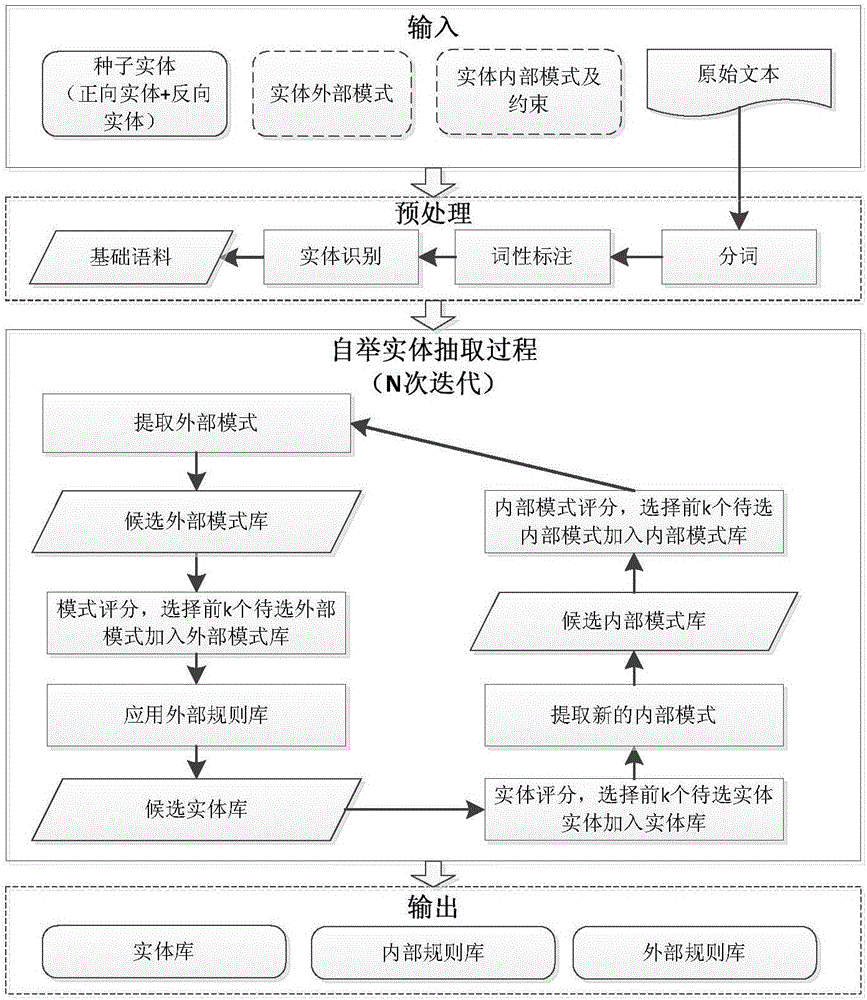Bootstrap Chinese entity extracting method based on modes
An entity extraction and entity technology, which is applied in natural language data processing, special data processing applications, instruments, etc., can solve problems such as inability to score, features that do not fully consider the characteristics of Chinese word segmentation, etc., to achieve improvement effects, good transferability, and reliability Strong transplant effect
- Summary
- Abstract
- Description
- Claims
- Application Information
AI Technical Summary
Problems solved by technology
Method used
Image
Examples
Embodiment Construction
[0051] The technical solution of the present invention will be further introduced below in conjunction with the accompanying drawings and specific implementation methods.
[0052] The invention discloses a pattern-based bootstrap Chinese entity extraction method, which performs entity recognition and rule base construction for each entity type, including the following steps:
[0053] S1: The user gives the following input: a. Forward seed entity and reverse seed entity; b. Internal constraints, internal models and confidence levels of forward seed entity and reverse seed entity; c. Forward seed entity and reverse seed entity The external constraints to the seed entities, that is, the context information of the forward seed entities and the reverse seed entities; d. The original unlabeled text; in the above four types of input information, a, d cannot be empty, b, c can Is empty;
[0054] S2: Perform domain-independent word segmentation, part-of-speech tagging, syntax analysis...
PUM
 Login to View More
Login to View More Abstract
Description
Claims
Application Information
 Login to View More
Login to View More - R&D
- Intellectual Property
- Life Sciences
- Materials
- Tech Scout
- Unparalleled Data Quality
- Higher Quality Content
- 60% Fewer Hallucinations
Browse by: Latest US Patents, China's latest patents, Technical Efficacy Thesaurus, Application Domain, Technology Topic, Popular Technical Reports.
© 2025 PatSnap. All rights reserved.Legal|Privacy policy|Modern Slavery Act Transparency Statement|Sitemap|About US| Contact US: help@patsnap.com



